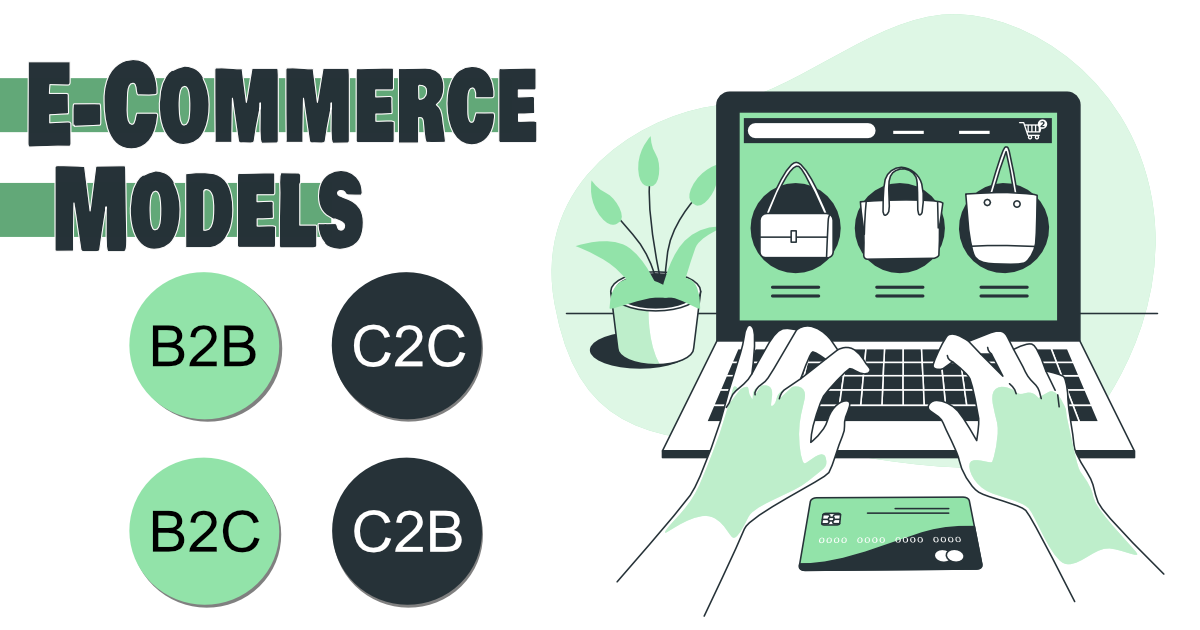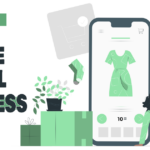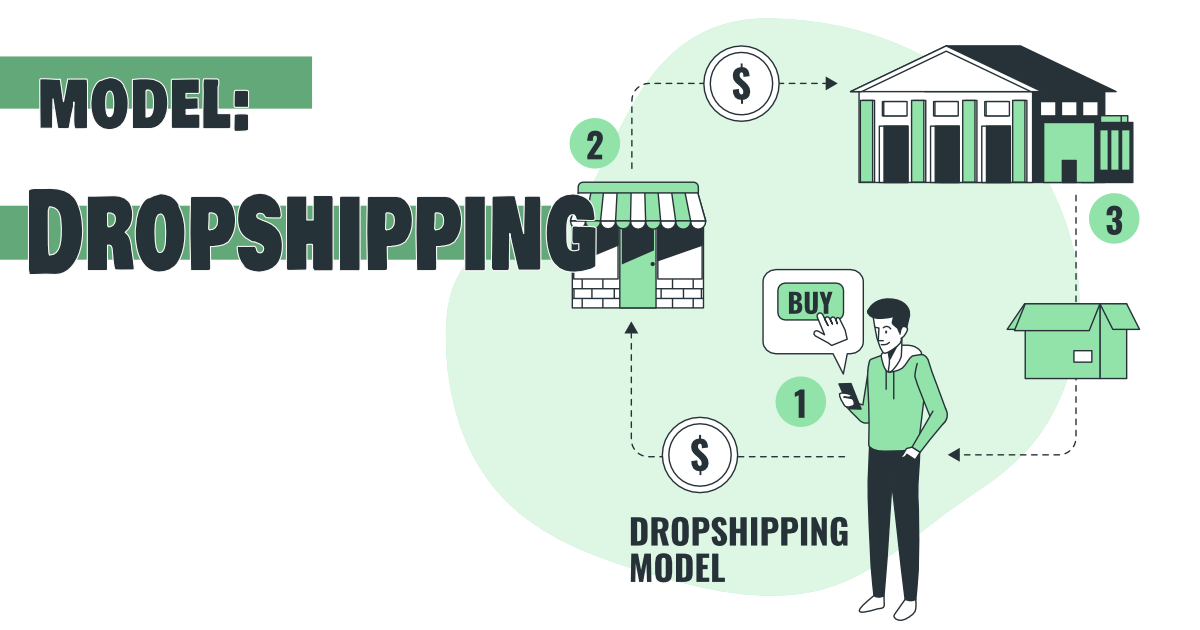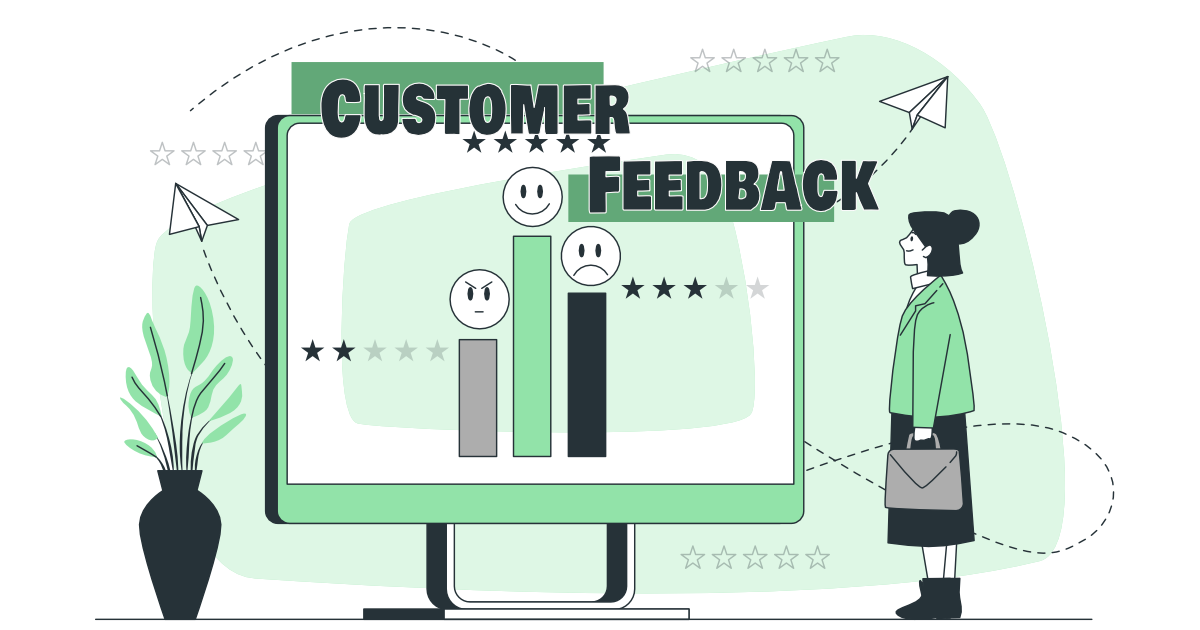The digital age has paved the way for businesses to reach customers globally, leading to a proliferation of e-commerce models. The main types of e-commerce models include B2B (business-to-business), B2C (business-to-consumer), C2C (consumer-to-consumer), and C2B (consumer-to-business). Each model offers unique advantages and challenges, and businesses must carefully consider which one is the best fit for their needs. In this article, we’ll explore each of these e-commerce models in depth and examine the opportunities and challenges that come with each one.
B2B (Business-to-Business)
B2B e-commerce refers to the sale of products or services from one business to another. This type of e-commerce is typically used by manufacturers, wholesalers, and distributors to sell their products to other businesses.
B2B e-commerce has several advantages, including cost savings, increased efficiency, and improved customer relations. By conducting transactions online, businesses can reduce the costs associated with traditional sales processes, such as travel, printing, and manual labor. B2B e-commerce also enables businesses to automate many of their sales processes, leading to greater efficiency and improved accuracy.
B2B e-commerce typically involves a multi-step process, including product research, negotiation, order placement, payment, and delivery. The process may be facilitated by an e-commerce platform, which can streamline many of these steps and provide businesses with access to a wider pool of potential customers.
Examples
Examples of B2B e-commerce include wholesalers selling products to retailers, manufacturers selling products to distributors, and service providers selling their services to other businesses.
Real-Life Examples
- Alibaba.com, a global B2B e-commerce platform connecting buyers and suppliers from all over the world.
- Amazon Business, a B2B marketplace that offers a wide range of products and services for businesses of all sizes.
Best Practices for B2B E-commerce
- Develop a strong online presence and establish your brand.
- Offer competitive pricing and discounts.
- Provide detailed product information and high-quality product images.
- Offer a user-friendly ordering process.
- Ensure timely delivery and provide excellent customer service.
- Continuously analyze your customer data and make data-driven decisions.
Actionable Tips
- Utilize a B2B e-commerce platform to expand your reach and simplify the sales process.
- Offer customizable and flexible payment options to meet the needs of your customers.
- Build relationships with suppliers and distributors to ensure a consistent supply of products.
- Continuously gather customer feedback and use it to improve your offerings and processes.
In conclusion, in conclusion, B2B e-commerce is a valuable tool for businesses looking to expand their reach, improve efficiency, and reduce costs. By adopting a well-designed B2B e-commerce strategy, businesses can tap into new markets, build strong customer relationships, and increase their overall success.
B2C (Business-to-Consumer)
B2C e-commerce refers to the sale of products or services from a business to individual consumers. This type of e-commerce is the most common and widely recognized form of e-commerce.
B2C e-commerce offers a number of benefits for businesses, including increased reach, improved convenience, and increased profitability. With B2C e-commerce, businesses can reach a larger pool of potential customers and provide them with the ability to shop from the comfort of their own homes. Additionally, B2C e-commerce enables businesses to offer a wider range of products and services and to customize the shopping experience to meet the needs of individual customers.
B2C e-commerce typically involves a simple, straightforward process that includes product research, browsing, product selection, payment, and delivery. The process may be facilitated by an e-commerce platform, which can streamline many of these steps and provide customers with a convenient, seamless shopping experience.
Examples
Examples of B2C e-commerce include online retailers such as Amazon, fashion retailers such as Zara, and service providers such as Uber.
Real-Life Examples
- Amazon, the world’s largest online retailer, offers a wide range of products and services to consumers.
- Etsy, an online marketplace for handmade and vintage goods, allows consumers to purchase unique, one-of-a-kind items directly from individual sellers.
Best Practices for B2C E-commerce
- Invest in a user-friendly and attractive website design.
- Offer a wide range of products and services.
- Provide detailed product information and high-quality product images.
- Offer multiple payment options and a secure checkout process.
- Provide fast and reliable shipping options.
- Offer excellent customer service and support.
Actionable Tips
- Utilize social media and other marketing channels to drive traffic to your website.
- Offer promotions and discounts to encourage customer loyalty.
- Continuously gather customer feedback and use it to improve your offerings and processes.
- Invest in a mobile-friendly website to reach customers on-the-go.
- Utilize data and analytics to better understand your customers and make data-driven decisions.
In cconclusion, B2C e-commerce provides businesses with a powerful tool for reaching and serving individual customers. With its increased reach, improved convenience, and increased profitability, B2C e-commerce has become an essential component of modern business strategy. By adopting a well-designed B2C e-commerce strategy, businesses can tap into new markets, build strong customer relationships, and increase their overall success.
C2C (Consumer-to-Consumer)
C2C e-commerce refers to the sale of products or services from one individual consumer to another. This type of e-commerce is often facilitated by online marketplaces that bring together buyers and sellers.
C2C e-commerce offers a number of benefits for consumers, including increased access to a wider range of products and services, the ability to purchase unique, one-of-a-kind items, and the ability to save money by purchasing gently used or pre-owned items. Additionally, C2C e-commerce provides a platform for individuals to monetize their belongings and hobbies, making it a great opportunity for entrepreneurial-minded individuals.
C2C e-commerce typically involves a simple, straightforward process that includes product research, browsing, product selection, payment, and delivery. The process may be facilitated by an online marketplace, which can streamline many of these steps and provide customers with a convenient, seamless shopping experience.
Examples
Examples of C2C e-commerce include online marketplaces such as eBay and Etsy, as well as classifieds sites such as Craigslist.
Real-Life Examples
- eBay, the world’s largest online marketplace, allows consumers to buy and sell a wide range of products and services.
- Airbnb, the world’s largest provider of short-term rentals, allows individuals to rent out their homes and other spaces to travelers.
Best Practices for C2C E-commerce
- Utilize a trusted online marketplace with a good reputation.
- Clearly and accurately describe the product or service being sold.
- Provide high-quality images and detailed product information.
- Use a secure payment system to protect both buyer and seller.
- Ensure fast and reliable shipping options.
- Offer excellent customer service and support.
Actionable Tips
- Utilize social media and other marketing channels to drive traffic to your marketplace.
- Offer promotions and discounts to encourage customer loyalty.
- Continuously gather customer feedback and use it to improve your offerings and processes.
- Invest in a mobile-friendly website to reach customers on-the-go.
- Utilize data and analytics to better understand your customers and make data-driven decisions.
In conclusion, C2C e-commerce provides consumers with a powerful tool for accessing a wider range of products and services, and for monetizing their belongings and hobbies. With its increased reach, improved convenience, and increased profitability, C2C e-commerce has become an essential component of modern consumer behavior. By utilizing a trusted online marketplace and adopting a well-designed C2C e-commerce strategy, individuals can tap into new markets, build strong customer relationships, and increase their overall success.
C2B (Consumer-to-Business)
C2B e-commerce refers to a business model where consumers sell goods and services to businesses. In this model, businesses bid on the products or services offered by consumers. The highest bidder wins and makes the purchase from the consumer.
C2B e-commerce provides an opportunity for consumers to monetize their skills and products. It also enables businesses to access a wider pool of talent and products, thereby reducing their costs. Moreover, this model can create a win-win situation for both consumers and businesses.
How C2B E-commerce Works?
- Consumers offer their products or services for sale on a C2B platform.
- Businesses view the offerings and place bids on the products or services they want to purchase.
- The highest bidder wins the right to purchase the product or service.
Relevant Examples
- Freelancer.com is a C2B platform that connects businesses with freelancers offering their services.
- 99designs is a C2B platform that connects businesses with graphic designers who offer their design services.
Real Life Examples
- A software developer offers to develop a custom software solution for a business. The business bids on the developer’s services and makes the purchase if their bid is accepted.
- A graphic designer offers to design a logo for a business. The business bids on the designer’s services and makes the purchase if their bid is accepted.
Best Practices for C2B E-commerce
- Offer quality products or services that are in high demand.
- Provide a clear and detailed description of the products or services offered.
- Set competitive prices to attract businesses.
- Respond promptly to bids and inquiries from businesses.
- Offer exceptional customer service to ensure repeat business.
Actionable Tips
- Research the market to identify in-demand products or services that can be sold through C2B e-commerce.
- Develop a strong personal brand to increase the visibility of your offerings.
- Utilize social media and online marketing to reach a wider audience of businesses.
- Provide excellent customer service to build a positive reputation and attract repeat business.
In conclusion, C2B e-commerce is a business model that enables consumers to sell their products or services to businesses. It can be a great opportunity for individuals with skills or products to monetize their offerings and for businesses to access a wider pool of talent and products. By following best practices and utilizing effective marketing strategies, consumers can maximize their success in the C2B e-commerce market.
Resources and References
- “B2B E-Commerce for Dummies” by Ron Volpe and John R. Johnson
- “E-Commerce: Business, Technology, Society” by Kenneth C. Laudon and Carol Guercio Traver
- “The Lean B2B Startup: Drive sustainable and scalable growth” by David Skok
- “E-Commerce: Business, Technology, Society” by Kenneth C. Laudon and Carol Guercio Traver
- “The Lean B2C Startup: Drive sustainable and scalable growth” by David Skok
- “Online Marketing for Dummies” by Susan Gunelius
- “The eBay Millionaire: PowerSelling Secrets to Financial Freedom” by Amanda Hocking
- “Starting an Etsy Business for Dummies” by Kate Gatski and Kate Shoup
- “The Power of Classifieds: How to Sell More with Less Effort” by John Caples
- “The Lean Startup: How Today’s Entrepreneurs Use Continuous Innovation to Create Radically Successful Businesses” by Eric Ries
- “The Art of Possibility: Transforming Professional and Personal Life” by Rosamund Stone Zander and Benjamin Zander
- “Thinking, Fast and Slow” by Daniel Kahneman













